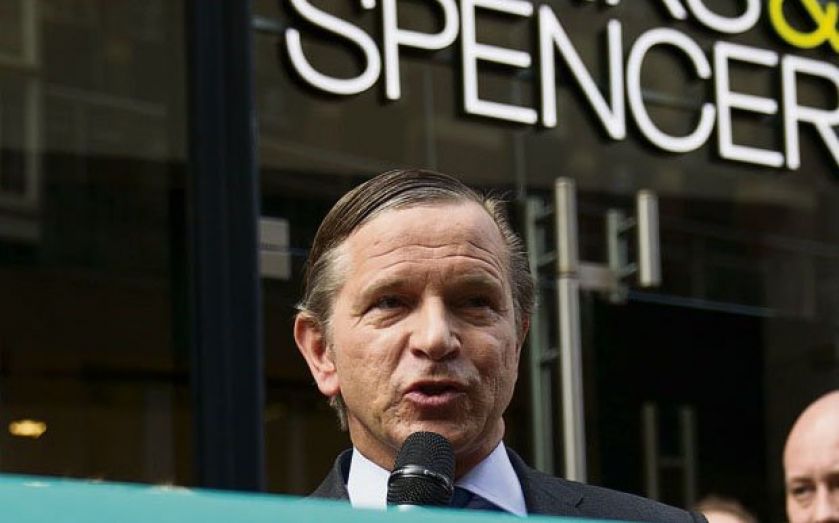| Updated:
Marks & Spencer sees food sales spark share price rally

Marks and Spencer shocked markets yesterday with unexpectedly strong sales, driven by its food business and – until the warm weather in September hit sales – robust clothes results.
Investors had been worried that the group would follow Next and Tesco with poor results, but instead flooded back into the stock.
The share price shot up 9.74 per cent on the results, taking it to 444.10p and erasing the losses seen over the past months on the unseasonable weather.
Pre-tax profits came in at £297.4m for the six-month period, flat on the year, while underlying profits edged up 2.7 per cent to £267.6m.
Food sales drove the good performance, rising 3.6 per cent on the year to £2.5bn.
By contrast, general merchandise fell 2.3 per cent to £1.9bn. Within that category, clothes sales fell 1.6 per cent.
The crucial women’s wear line performed strongly until September struck with warm weather, spoiling M&S’ winter clothing plans. The sales rose 1.3 per cent on the year over the first five months – but then ended down by more than 0.8 per cent after September.
Chief executive Marc Bolland may now be safer in his position, as the strong performance compared with rivals eases the threat of being unseated. He increased his targets for higher margins yesterday, and explained the high street giant plans to sharpen its focus on getting shoppers to pay the full price for clothes, rather than joining the trend for discounting.
“There is a trade off between margin and sales, and we will make these trade offs. Sometimes it is more on margins,” Bolland said.
And he hopes customers are at last ready to spend more at Christmas.
“The consumer is quite confident. They feel there is some money to spend over Christmas. They are interested in something new, they would not want to re-use Christmas decorations, or on the gifting side to hold back – they can afford a bit more this Christmas.”
M&S added 30 basis points to margins by reducing discounts, and another 120 through more efficient supply management.
Bolland cut staffing costs by 2.1 per cent to £469m, and is bringing capital expenditure down several hundred million to £500m to £550m per year for the forseeable future.
As a result M&S has increased its margin guidance by another 50 to 100 basis points, again cheering markets.
Analysts were cautiously optimistic on the rise in dividend payouts.
“The increase wasn’t spectacular, with the payment raised by just 0.2p to 6.4p, a mere three per cent rise,” said Garry White from Charles Stanley. “But this is the first time in four years that the payment has been increased.”
BOLLANDISMS:
We don’t want to talk about the weather. If we single out the five-month trend rate, it was 1.3 per cent up for women’s wear. With September, it was down 0.8, 0.9 per cent.The consumer is quite confident. They feel there is some money to spend over Christmas. They would not want to re-use Christmas decorations, or on the gifting side to hold back.We analysed the way we account for [Tesco-like] activities, and we have none of that.